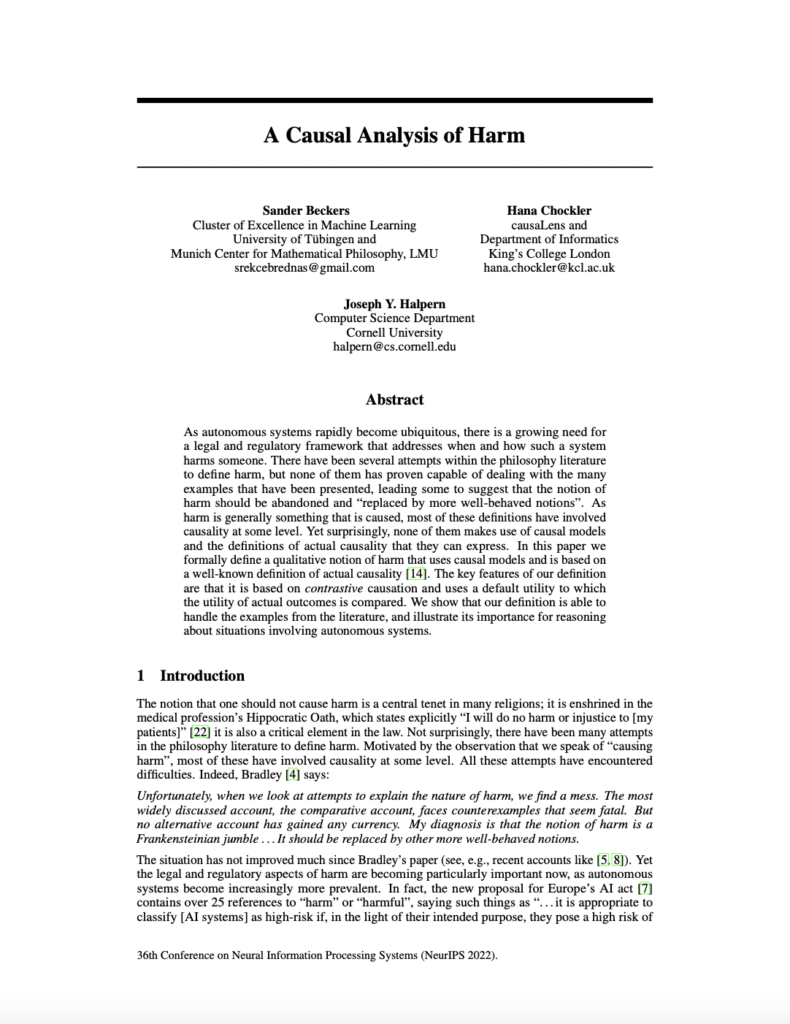- Research Papers
A Causal Analysis of Harm
23 November 2022, 17:20 GMT
Defining harm is essential for dealing with the many legal and regulatory issues around the growing integration of autonomous systems in society. Consider, for example, the question of harm in accidents involving self-driving cars. In non-trivial situations, the self-driving cars’ algorithms might make decisions that cause harm to their users (for example, to avoid a greater harm to a larger number of people), and the users might then argue that there were better alternatives. In the healthcare domain, autonomous systems are used for, among other things, to classify MRI of brains of patients suspected of having brain tumors. A positive classification might lead to a recommendation for a surgery, which is in itself an invasive procedure.
In this paper, published and presented at NeurIPS 2022, we provide a formal definition of harm that we believe deals with all the concerns that have been raised, seems to match our intuitions well, and connects closely to work on decision theory and utility. The definition incorporates actual causality as a precondition for causing harm, together with the new concepts of the utility function and the default values that we introduce to the model. The utility function is used to express utility to the agent in question, and the default value is a “baseline”, capturing the lowest utility where harm is not inflicted.
We show that our definition deals well with the many problematic examples in the philosophy literature. We believe that it will be widely applicable in the regulatory frameworks that we expect to be designed soon in order to deal with autonomous systems.
A companion paper, available on arXiv, presents the quantification of our notion of harm and deals with weights and aggregation issues, and in particular, the question of choosing the least harmful among the set of all possible interventions.